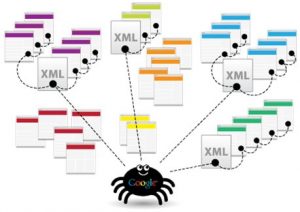What is a Sitemap?
In simple terms, a Sitemap is an XML file that is full of your individual webpage’s URLs. It’s like an archive of every webpage in your website. This file should be easily discoverable in your site in order for search engine crawlers to stumble upon it.
What is a Sitemap for?
 A Sitemap is usually used for the purpose of letting the search engine crawlers follow the links to all your individual webpages so that it won’t miss out on anything.
A Sitemap is usually used for the purpose of letting the search engine crawlers follow the links to all your individual webpages so that it won’t miss out on anything.
Sometimes we leave out URLs or hide them from all visible pages because we don’t exactly want some of the users to go there. As a result, some of these URLs are uncrawlable to search engine spiders.
We can still leave those URLs hidden from some users without having to lose out on those pages not being crawled by search engine spiders through including hem in an XML Sitemap.
How do you create a Sitemap?
A Sitemap is pretty easy to create. For WordPress users, you can download the Google XML Sitemaps plugin to make it easier for you. This plugin helps you generate an XML sitemap without having to do anything but activating it.
After the plugin has generated your Sitemap, you can find the Sitemap at an address like this:
http://YourURL/sitemap.xml
My Sitemap can be found at http://seo-hacker.com/sitemap.xml but I usually place the website’s Sitemap at the footer too so that it would have a stronger crawlable presence.
For those who are not using WordPress, you can use this online XML-Sitemaps generator tool. It’s pretty easy and they provide a step-by-step approach for you to implement your own Sitemap in your website.
How does your Sitemap affect your SEO?
Search engines should see all the pages that you want them to see. The more pages that they index from you, the more trust your site gains. It only means that your website has more information to offer.
Making sure the search engine spiders get to crawl all the stuff they need to crawl from your website is the exact purpose of a Sitemap. It’s not for navigation, it’s not for internal linking. It’s for the search engine spiders.
It won’t greatly boost your on-site SEO, but it would definitely help.
Tips for Keeps: Get your own Sitemap if you don’t already have one. It’s easy and it’s necessary.


